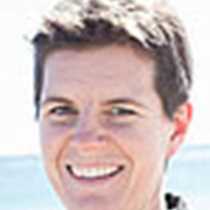Traveling south from Glacier Bay overnight, we traversed Chatham Strait and made our way along the east side of Chichagof Island. Our misty morning focused on Lake Eva and the surrounding temperate rain forest dominated by Sitka spruce and western hemlock. Kayakers explored the dynamic tidal lagoon, where river outflow from the lake meets the ocean. Paddling on a falling tide, they skirted a salt marsh, gravel spit, and the lower reaches of the estuary. Because this river provides ideal habitat for both adult spawning and juvenile development, it supports salmon runs of multiple species through the summer and fall seasons. Others of our group enjoyed walks of varied lengths through the stands of both second and old growth forest; a few brave individuals even went for a swim in chilly Lake Eva!
The complexity of the old growth forest creates many habitats, supporting thousands of species from soil microbes to insects to lichens to small mammals and bats. Large trees serve as the factories of the forest, bringing energy into the ecosystem through photosynthesis while storing essential nutrients and organic material that are eventually recycled back into the environment. Standing dead trees (snags) and fallen trees on the forest floor result from wind disturbances, slowly enriching the soil as they decay. Their biological legacy continues for decades as other plants and young trees grow atop such nurse logs. With layers of shrubs, ferns, flowers, and mosses, there were interesting things to examine around every turn.
This afternoon, Andy Szabo came aboard National Geographic Sea Bird to share recent research insights about the southeast Alaska humpback whale population. As the Director of the Alaska Whale Foundation, Andy has spent many years studying the behaviors, social structure, identities, migration patterns, and ecological challenges of these marine mammals. His scientific observations, stories, and videos offered a wonderfully detailed complement to our own whale viewing experiences thus far during the expedition. Indeed, while departing Warm Springs Bay towards our evening destination, we shared the company of a feeding humpback.
We concluded this busy day with two special features: a Movie Night showing of “Finding Nemo” and a visit to geologically unique Red Bluff Bay. After navigating a few tight turns to reach this narrow bay, a section of the rarely-visible Earth’s mantle came into view–our shipboard rock enthusiasts ensured we appreciated the opportunity to see firsthand something typically deep beneath the surface of the planet. All are looking forward to exploring the town of Petersburg tomorrow.






